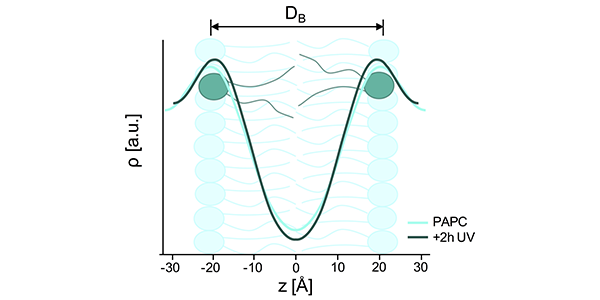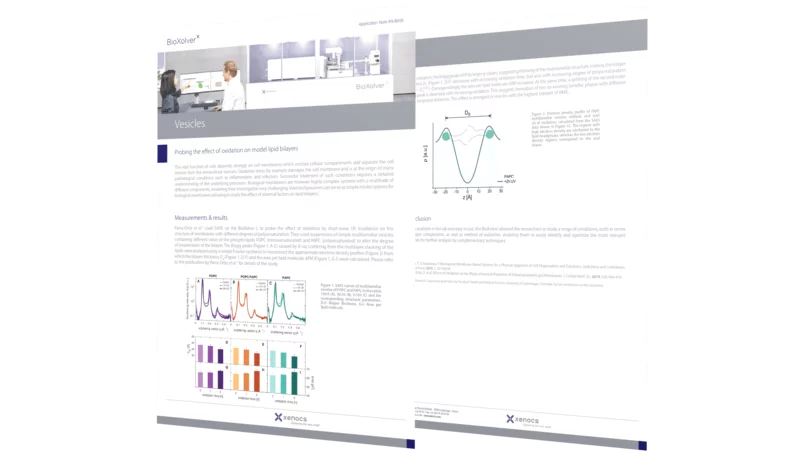Probing the effect of oxidation on model lipid bilayers
Introduction
The vital function of cells depends strongly on cell membranes which enclose cellular compartments and separate the cell interior from the extracellular domain. Oxidative stress for example damages the cell membrane and is at the origin of many pathological conditions such as inflammation and infection. Successful treatment of such conditions requires a detailed understanding of the underlying processes. Biological membranes are however highly complex systems with a multitude of different components, rendering their investigation very challenging. Vesicles/liposomes can serve as simple model systems for biological membranes allowing to study the effect of external factors on lipid bilayers1.
Measurements & results
Parra-Ortiz et al.2 used SAXS on the BioXolver L to probe the effect of oxidation by short-wave UV irradiation on the structure of membranes with different degrees of polyunsaturation. They used suspensions of simple multilamellar vesicles containing different ratios of the phospholipids POPC (monounsaturated) and PAPC (polyunsaturated) to alter the degree of unsaturation of the bilayer. The Bragg peaks (Figure 1, A-C) caused by X-ray scattering from the multilayer stacking of the lipids were analyzed using a simple Fourier synthesis to reconstruct the approximate electron density profiles (Figure 2) from which the bilayer thickness DB (Figure 1, D-F) and the area per lipid molecule APM (Figure 1, G-I) were calculated. […]

Figure 2. Electron density profile of PAPC multilamellar vesicles without and with 2h of oxidation, calculated from the SAXS data shown in Figure 1C. The regions with high electron density are attributed to the lipid headgroups, whereas the low electron density regions correspond to the acyl chains.
1 Lagny, T. & Bassereau, P. Bioinspired Membrane-Based Systems for a Physical Approach of Cell Organization and Dynamics: Usefulness and Limitations. Interface Focus 2015, 5, 20150038.
2 Parra-Ortiz, E. et al. Effects of Oxidation on the Physicochemical Properties of Polyunsaturated Lipid Membranes. J. Colloid Interf. Sci. 2019, 538, 404-419.


































